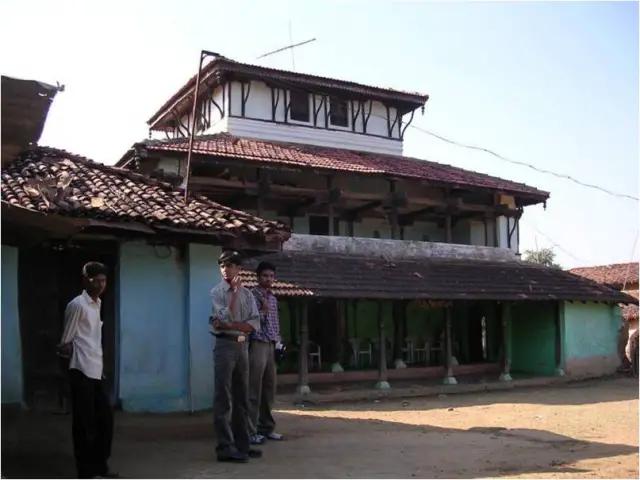
Traditional Dwelling Study of a House in Gondia, Maharashtra
INTRODUCTION
- Gondia district (almost on Maharashtra and MP border) is located near Nagpur in Mahrashtra.
- The traditional dwellings situated there, are typical for that region.
- The houses varied from small single storied mud structures to three or even more, in similar pattern.
- This is a study of a three storied haveli belonging to a zamindar.
- But unfortunately the front courtyard was a mere shadow of its original form.
- So, the information gathered here is a combination of a couple of other similar structures.
- So the main building of the original haveli is combined to the courtyard and livestock-shelters of the second, completing the original traditional dwelling as it would have had been.
BASIC HOUSE FORM
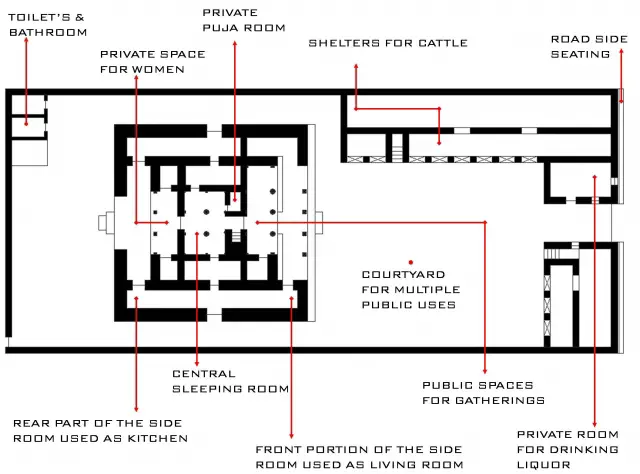
- Spaces are arranged about a central space which is the main bedroom.
- The plan is a rough 7×7 grid.
- The wall thicknesses vary from 1m and downwards.
ELEVATION
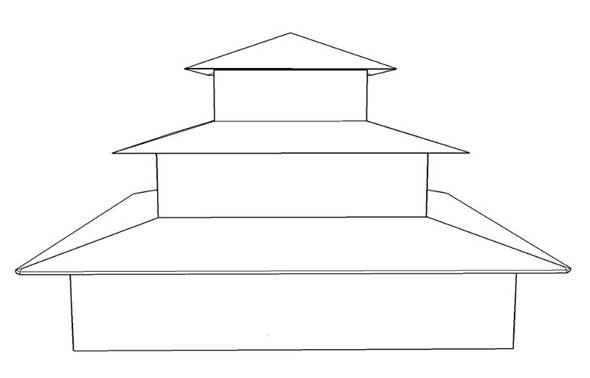
- A stepped pyramidal structure with sloping roofs.
- No open terrace and minimal openings.
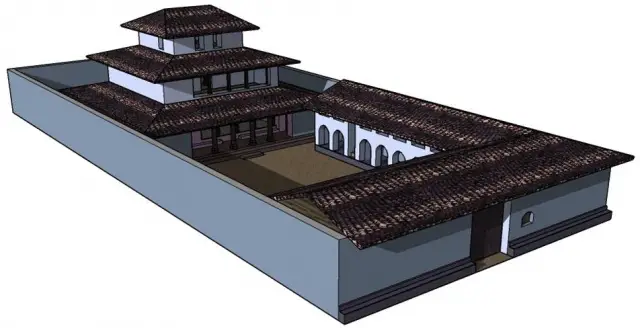
AN ISOMETRIC VIEW OF THE DWELLING COMPOUND
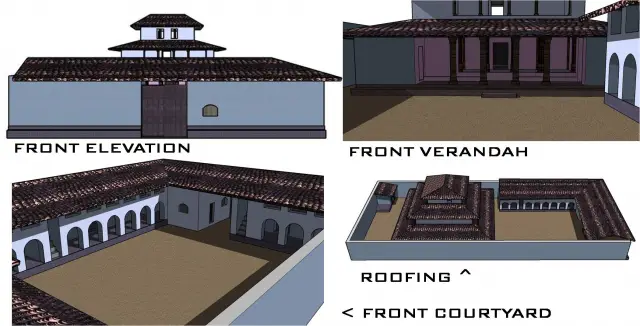
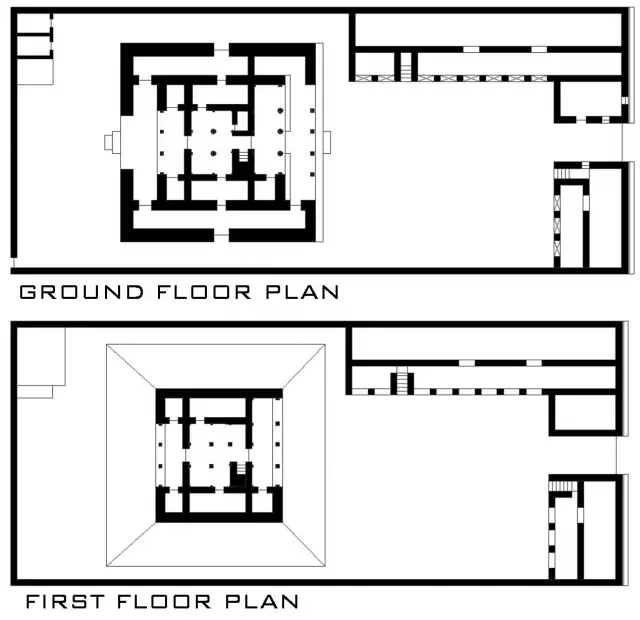
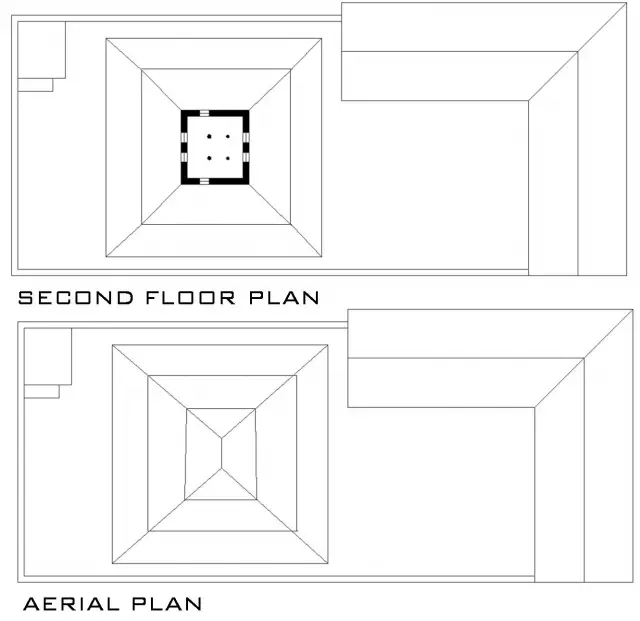
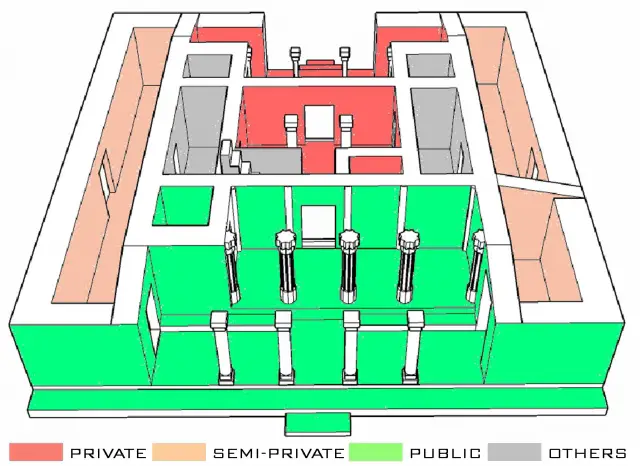
SECTIONAL PLAN SHOWING THE ZONING INSIDE HAVELI
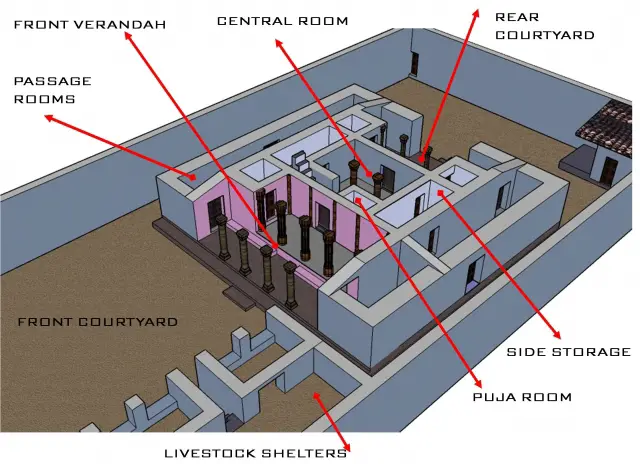
VILLAGE GATHERINGS
- Gatherings of males of the village happened daily in the evenings after the days work.
- Sometimes small scale social functions also happen here.
- This activity is completely public and thus no privacy is required.

- Front verandah for minor and personal gatherings
- A large courtyard suitable for holding mini functions
- Seating outside the main gate.

LIVESTOCK MANAGEMENT
- The managementof the livestock is mainly carried out by the servants, throughout the day.
- It is a combination of different activities like cleaning, milking, feeding, etc.
- Cleaning of the shelters is done eveyday.
- The 1st floor of the shelters is used for storing the fodder for the livestock. An year’s supply is stored at one go.
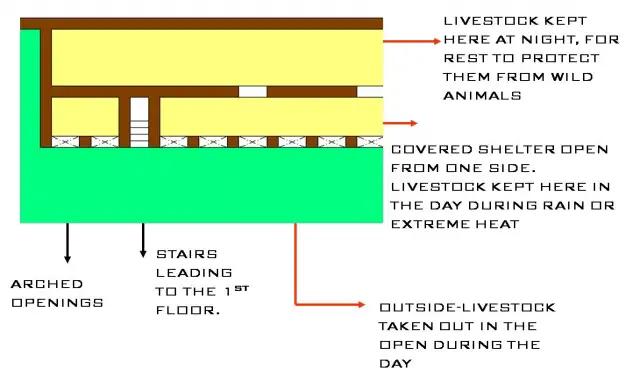
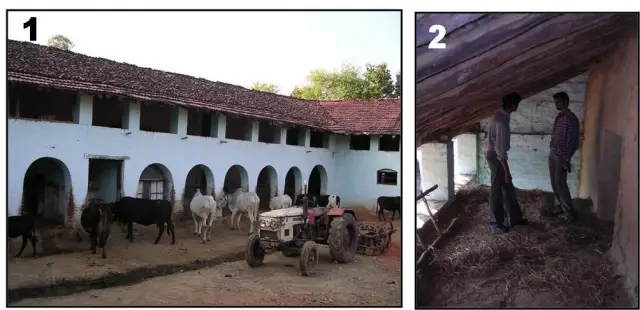
- Use of courtyard for livestock management.
- Storage on 1st floor, replenished each year.
STORAGE
- The whole built form has more combined space for storages than any other purposes.
- This is mainly because the amindar/ tehsildar the whole harvest produced on their land is stored in the haveli.
- Further there is a large collection of livestock, and storage is required for their fodder as well.
- Also an emergency food storage is kept for the family members.
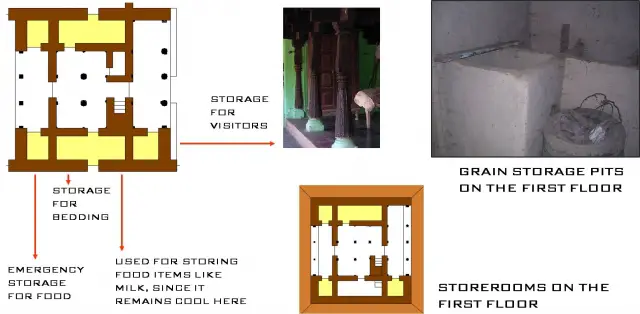
SLEEPING
- Sleeping was the activity done in the central room.
- The zamindar slept in both in the afternoon and night.
- It is a space where outsiders are not allowed.
- Adjacent side storage is used for storing the bedding whenever not in use.
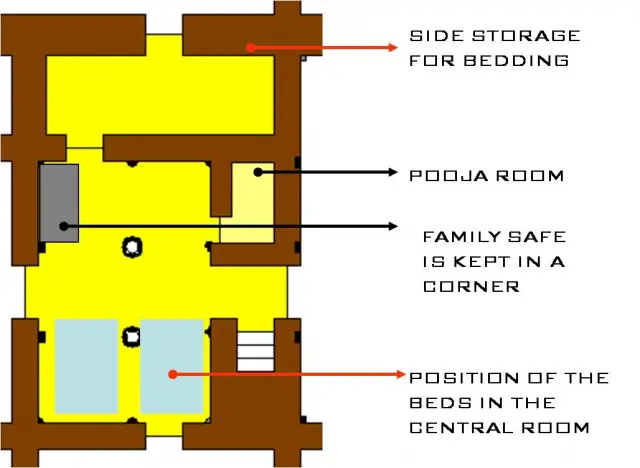
CLIMATE
- The building seems to be built keeping in mind all the seasons.
- Though it is best suited for summers.
- The upper floors act as false ceiling.
- The side passage rooms act as wind channels.
- Absence of openings reduces the heat exchange to the minimum.
- The roof extends almost a meter beyond the walls, probably to protect the heavy rainwater from soaking the walls.
- As well as to provide shade from the sun and prevent heating up of the building.
- Front courtyard faces the north, preventing direct solar rays on the most used part.
- The rear verandah can be used much more in winter due to sun’s southern inclination.
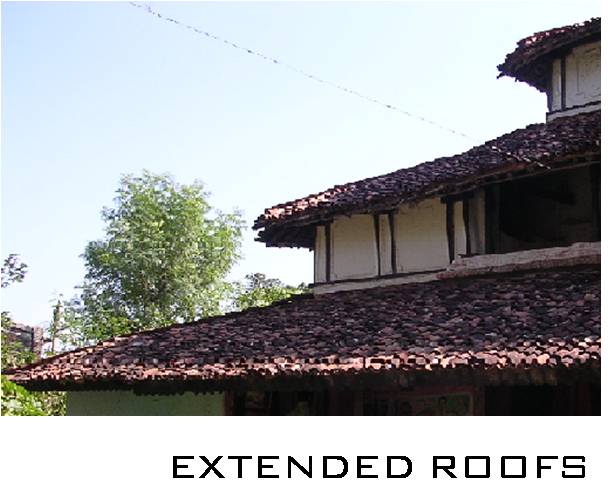
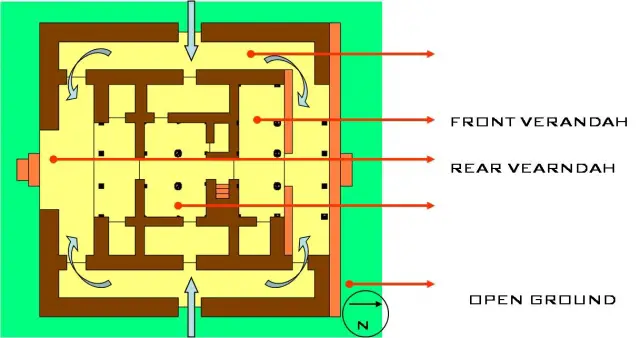
SPECIFIC FEATURES KEEPING IN MIND THE CLIMATIC CONDITIONS
- To resist heat gain
- Increase of thermal resistance and capacity by maximizing the building depth.(The thick walls increase the time lag)
- Increase of buffer spaces
- (Low utility areas like verandahs, courtyards, storages, etc.)
- Low utility upper floors act as false ceilings.
- Light colouring to minimize heat absorbtion by the walls.
- Promote heat loss
- Vegetation outside to decrease glare
- Others
- Overhanging roof to the north and south to provide protection from sun and rain and glare from the bright overcast sky
- Planting and layout provide protection from hot dry and cold winds
- Walls to provide some shade to external spaces
- Main habitable rooms facing north and south
- Main openings to the north and south
- Dwellings facing onto fairly generously proportional courtyards
LOCATION & BUILDING MATERIALS
- Setting
- The haveli is a structure with the entrance facing the north.
- A haveli is built in the centre of the land owned by a zamindar. This is about 100 acre.
- Other dwellings come up nearby adjacent to the haveli of the other villagers.
- Building Materials
- Building materials are completely local:
- Framework is done by teakwood found in the jungles nearby.
- Wherever stone is used, (most importantly as a plinth) is local stone. Grey granite is found in the region.
- Walls are made up off a mixture of mud + straw + cow dung.
- The walls are coloured with lime mixed with indigo, to give a light blue colour.
- The tiles used on the roof are burnt clay tiles
- Building materials are completely local:

- Timber framework
- Light blue color of the walls
- Mud walls
TRADITION AND BELIEFS
- Short heights of the door
- The doors throughout the haveli are less than 6ft in height.
- The main entry to the central room being almost 1.5m.
- This is to make sure that each person entering a room bends in respect .
- The big main entrance
- Oppositely the main entrance to the haveli is almost 3m x 3m.
- This is because the gate is supposed to have an inviting and open look.
- Secluded puja room
- The room is supposed to be very sacred and only the upper caste people are allowed to enter it.
- The pooja room is the most innermost room linked to the central room.
- It is a place where only the family members and priests are allowed.
- Sometimes poojas and even mini havans are conducted without anybody outside getting the whiff of it.
- Secluded area for women
- The womenfolk were not allowed to come out in open in front of everybody.
- They were restricted to the backside of the haveli basically the kitchen and the rear verandah.
DWELLING FORM AS STATUS & POSITION SYMBOL
TOWERING STRUCTURE
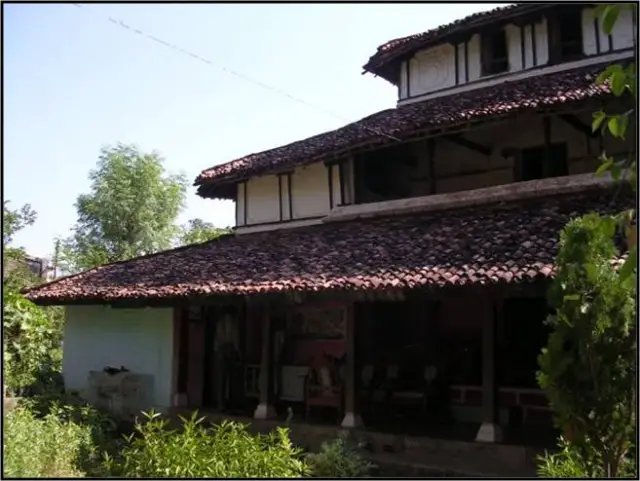
- As one approaches the village the 2nd floor of the haveli is seen towering on top of other single and double storeyed structures.
- Though built as an outpost for watching the estate the 2nd floor works rather as an identitifcation mark.
COURTYARD SIZE
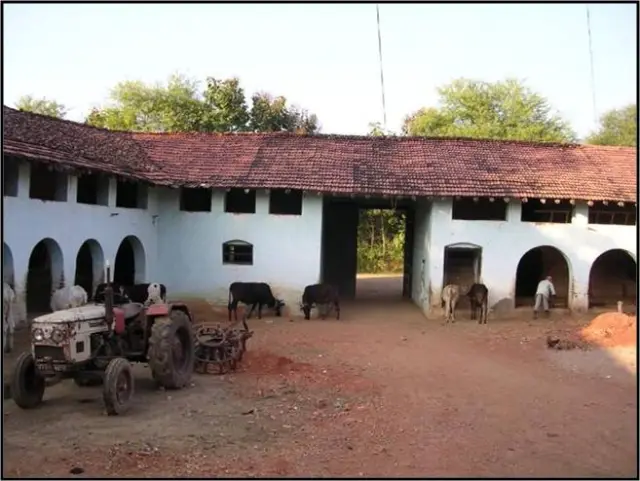
- Courtyard of the haveli is much larger than any other in the village measuring almost 17m x15m, making it an ideal spot for social functions.
GRAND ENTRANCE
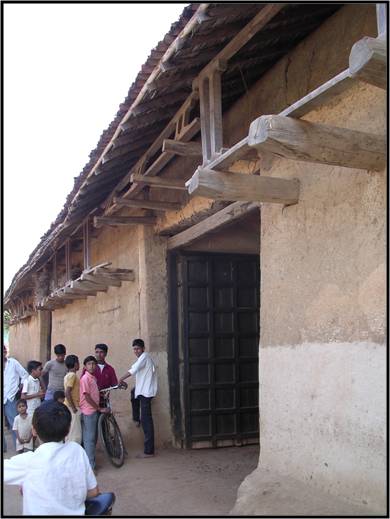
- Though entries to all residences in the village are big, the main gate to a haveli is the largest measuring about 3m x 3m and outer walls being 5m tall.
BUILDING MATERIALS USED
- The haveli has a comlete timber framework, about which the walls are formed. Teakwood is the only wood used in the haveli.
- It is een that use of timber decreases as one moves from rich to poor.
- Poorer people are seen to have houses built only with mud.
ORNAMENTATIONS
- Maximum decorations found in the haveli are in the front verandah inthe columns and doors. These is most importantly to show off.

the info provided by site is
the info provided by site is really wonderful & important for students studing architecture……
thanking you….
it is really an amazingly
it is really an amazingly compiled work…grt job…
ITS REALLY A NICE
ITS REALLY A NICE COMPILATION…
HEY CAN I GET THIS TYPE OF DOCUMENTATION FOR NAGPUR,MAHARASHTRA
gr8 work!its very helpful 4
gr8 work!its very helpful 4 my thesis!
such ancient architecture
such ancient architecture should be kept preserved so as we can study and apply it for the next generation thanks a lot for keeping all informations